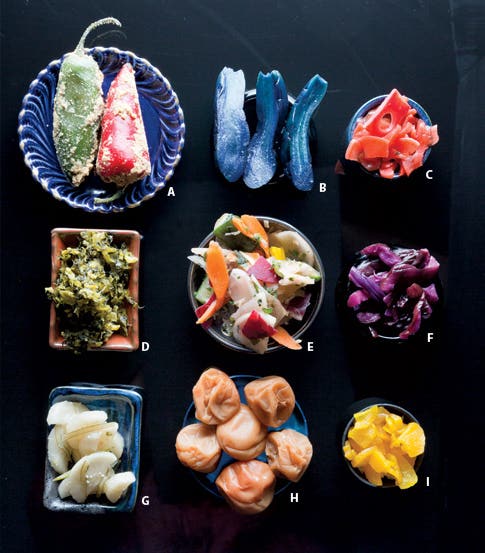
Tsukemono
The variety and deliciousness of tsukemono, traditional Japanese pickles, are simply unparalleled.
The variety and deliciousness of tsukemono, traditional Japanese pickles, are simply unparalleled. Smoky-tasting nukazuke A, vegetables pickled in fermented rice bran, and ko-nasuzuke B, tangy baby eggplant pickled overnight in mirin, sugar, and soy sauce, are usually eaten at the end of a meal. Sweet, acidic fukujinzuke C, a chutney-like daikon radish, lotus root, and ginger pickle, is often served with Japanese curry. Takanazuke D, sun-dried, salted mustard leaf, is sometimes flavored with soy sauce and sesame seeds and used to season rice. For hakusai to ninjin no sokusekizuke E, daikon and carrots are quick-pickled in vinegar with ginger and shiso for a bright palate cleanser. The purple hue of shibazuke F, crisp strips of cucumber and eggplant, comes from the pickling agent, plum vinegar. After a few hours in salted koji rice (steamed rice innoculated with Aspergillus oryzae, the fungus used to make sake and miso), daikon and seaweed become shiokojizuke G, umami-rich pickles that are perfect nibbled alongside sake. Intensely tart umeboshi H—salt-preserved Japanese plums—are typically eaten with rice. Takuan I are dried radishes that long-ferment in sugar, salt, and rice bran, a process that turns them yellow. They, too, are often the bright finale to a meal.
Tsukemono, $2.69 and up at shop.mitsuwa.com
Keep Reading
Continue to Next Story










